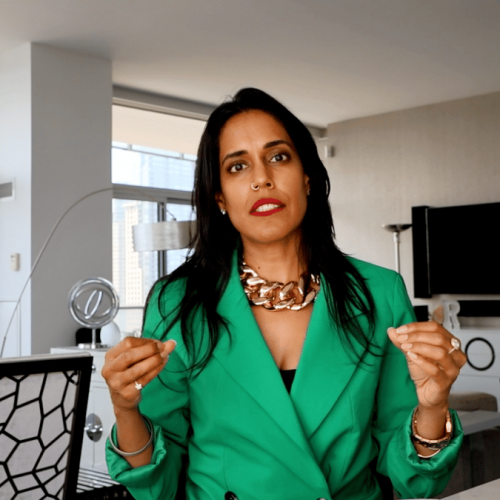
Given the work that I do, I spend a lot of time thinking about how people can make big changes in their lives. (I’m an equity, diversity, and inclusion consultant, a professional speaker, and the author of an empowerment book.)
What I’ve noticed consistently in my work is this: so many of us want to change how we behave in order to live happier lives and to create lasting change, but we find it so hard to make this happen. We yearn for things to be different, but we often don’t know how to get there, and unfortunately, the advice we typically receive to change our lives — “just follow your dreams” or “just be yourself” or “focus on being positive” — often isn’t constructive enough to help us.
What we really need is a practical way to create behavioral change in our lives so that we are more in alignment with how we want to be living. And that’s where a framework that I call the Seven Behavioral Dimensions comes into play. If you want to live your best, you need to master the Seven Behavioral Dimensions.
Understand Your Behavior, Change Your Life
In my book The Authenticity Principle, I talk in detail about a concept I’ve developed called the Seven Behavioral Dimensions. These dimensions reflect seven behavioral areas in which we make decisions, both consciously and unconsciously, about how to act at any given time.
In particular, all day long you’re deciding both consciously and unconsciously about how you want to behave across seven areas including how you express your emotions, how you communicate non-verbally, how you speak, your appearance, your actions, and more. (You can learn more about them here.)
Understanding how you’re currently behaving in each of the Seven Behavioral Dimensions is an important foundation for understanding what changes you need to make in your life to get you closer to where you want to be. Once you understand the reasons for your behavior, you then have the knowledge to begin making big changes in your life.
Here’s my question for you: how are you currently showing up in each of the Seven Behavioral Dimensions?
Small Behavioral “Nudges” Will Change How You Act and How You Think
In her book, Presence: Bringing Your Boldest Self to Your Biggest Challenges, Amy Cuddy describes the act of making small behavioral changes as “self-nudging.” She explains that self-nudges are minimal modifications to your behavior, which are intended to produce small psychological and behavioral improvements in the moment (for example, sitting more upright or placing your hands on your hips when speaking — behavior that will lead you to feel more confident — rather than starting with full-blown power posing). They are tiny tweaks with the potential to lead to big changes over time.
Cuddy explains that self-nudges are very powerful because they’re small and require minimal psychological and physical commitment, and the real magic is that while we think our attitudes will change our behavior, the reverse is true as well — attitudes follow from behaviors.
To take this a step further, when you change your behavior, it ultimately changes your thoughts and mindset.
Break Down Your Behavior
Looking closely at how you are showing up in each of the Seven Behavioral Dimensions will help you understand the conscious and unconscious decisions you’ve been making about how you show up. It will also help you connect the dots on where you should be “self-nudging” in order to get closer to being in alignment with how you want to behave.
Think about what you want to have happen in your life and about what’s most important to you. Do you want to attract friends you can be yourself around? Do you want to get your dream job? Do you want to live more authentically? Do you want to better connect with your children? Do you want to live a values-based life?
When you know what kind of change you want to make, then you can use the Seven Behavioral Dimensions to build yourself a practical plan for change. For example, if your goal is to better connect with your children, you might note that you currently spend little time exploring your kids’ passions. Now that you’re aware of your behavior, you can consciously start engaging in activities with your kids that enable you to learn more about their needs and wants.
If your goal is to live a life that reflects your value of kindness, you might note that when you’re stressed at work, you’re letting it affect how you speak to your colleagues (you tend to be very direct when stressed). In the “words you use” dimension, you might decide to invoke a deliberate pause before speaking to be more mindful of the impact of your words.
The key is to start small. Choose a manageable number of incremental changes that will give you small wins and help get you comfortable with living differently. Over time, you can move on to more challenging behavioral adjustments.
So here’s my takeaway question for you: what are the small behavioral nudges you want to make across each of the Seven Behavioral Dimensions?
The important thing to remember is that you are in the driver’s seat when it comes to your behavior. You have all the tools you need to change your life!

I'm Ritu.
I’m an award-winning life coach, empowerment speaker, author, and inclusion expert dedicated to helping you live your best life.

Join MY COMMUNITY
Sign up for my mailing list to get free inspiration and tools straight to your inbox!
Top Posts
Related Posts

Dig deep into your journey to belong.
Be the first to learn about my authenticity and empowerment goodies and get them straight to your inbox.









